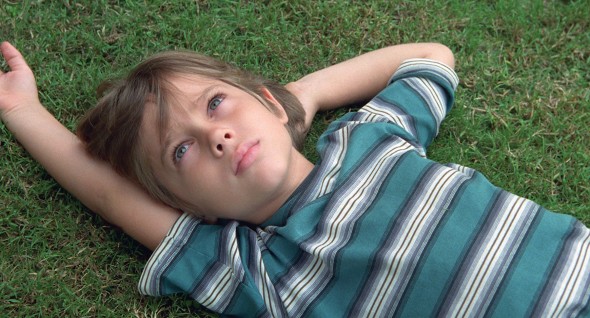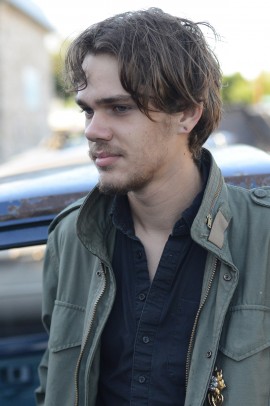Film takes realistic, complicated look at growing up

Boyhood follows Ellar Coltrane’s “Mason” over 12 years. Director Richard Linklater shows the happy and complicated moments of the fictional family’s life.
Imagine yourself being filmed for 12 consecutive years. What would be captured? Big moments? Small moments?
Richard Linklater, director and writer of Boyhood, took on that very project, revealing both. Released in August by IFC Films, Boyhood follows Mason and his fictional family for 12 years, starting in 2002. It’s definitely an unconventional film, but that doesn’t seem like a feat for Linklater.
The director is best known for the 1993 Dazed and Confused, which has developed somewhat of a cult following. Also on his résumé: Before Sunrise (1995), Before Sunset (2004) and Before Midnight (2013), filmed nine years apart from each other with the same characters (played by the same actors) falling in love, getting married and becoming parents.
Time is definitely an element thatLinklater likes to mold with his hands, easy enough to notice in Boyhood, where time is not only within the setting of the film, but also within the characters’ bodies that become taller, thinner, wider and aged over 12 years, filmed at the same period each year.
The actors grow older physically and mentally before the camera, most noticeably the protagonist, Mason, played by Ellar Coltrane, and his sister, Samantha, played by the director’s daughter, Lorelei Linklater. They grow away from their mischievous, childish selves into teens and young adults. In each new phase of life comes new moments, bits and pieces, that shape the characters into their older selves or have no role whatsoever, because how many times have we been affected by a camping trip or a sibling fight?
The parents of Mason and Samantha, played authentically by Patricia Arquette and Ethan Hawke, are split as a couple before the film starts. That’s one obstacle that all characters face — the mom struggles to be a single parent while attending school; dad finds it hard to be prominent as a father figure in the lives of his children; and Mason and Samantha bear witness to the multiple fights between the parents.
There are many more struggles in the film — abusive fights, unsatisfactory teen romances and dismissal of parental authority, all of which could be seen as central plots in other films, but Linklater uses them as mere moments that are followed by casual and insignificant scenes of life. The film has no introduction, climax or conclusion. There is no formula, it just is.
Cinematographers Lee Daniel and Shane F. Kelly know how to capture Mason’s moments, often delivered with grace through simple shots. There’s no dramatization through fancy and complicated filming.
But what’s most fantastic about Boyhood is the naturalness of the conversations, so well written by Linklater, who admits that they were very much rehearsed.
Something of interest to me was the music. More often than not, there wasn’t anything aside from the natural, everyday sounds — footsteps, dishes clashing, wheels turning against the road.
But there were references to music of that year’s filming, like Britney Spears’ “Oops I Did It Again” early in the film, and High School Musical’s ‘We’re All in this Together” later on. These references helped me adjust to Boyhood’s moving pace, making me reflect on my own childhood and identify with Mason and the others.
Although there are several pop culture references, they serve as mere hints to the outside world. Mason’s life moves on despite fading trends, holding true to his own entity.
It’s hard to classify this film as gender specific. Even though it’s called Boyhood, and most of the scenes follow Mason, the moments are so universal. Too embarrassed to go to school because of a haircut, going through a parents’ divorce, getting past that awkward stage of teenage years, being the new kid — at least one of these has been experienced by all.
Near the end of the film, Mason’s mom tells him, “I just thought there would be more.”
Having gone through her own struggles and watching her kids grow older, there’s something sad and unsatisfying about it all, a view that some might hold of Boyhood.
The mom considers death as her next step in life, which may be her next big “event,” but not if she considers the collection of smaller moments that have yet to come.
Life is plot-less and not defined by any single moment. It’s spontaneous, risky, abusive, happy, tragic and complicated. Life is life. It just is, as Linklater suggests.

